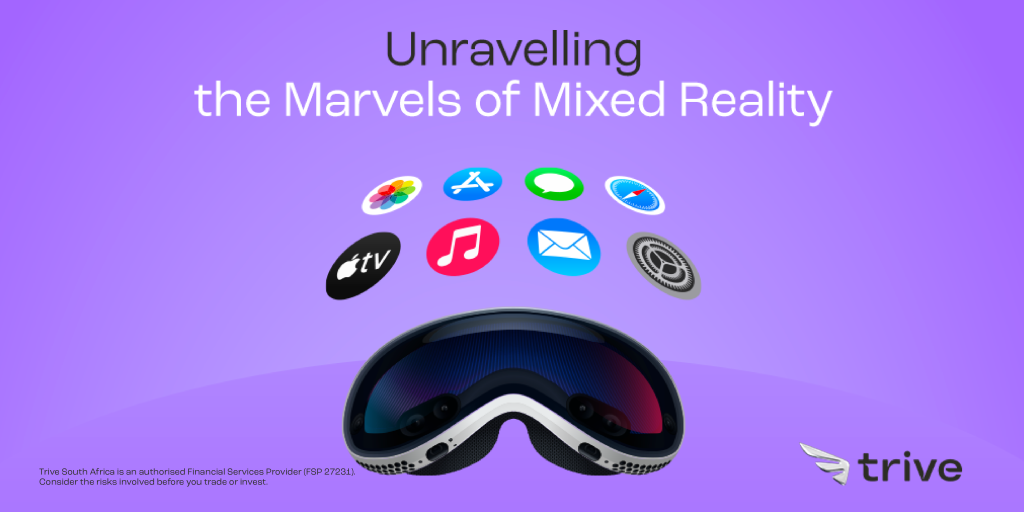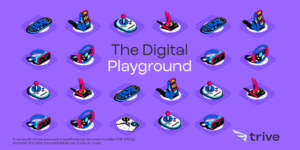
Imagine a world where the boundaries between the physical and digital realms blur, where immersive experiences merge seamlessly with our everyday lives. This is the world of Mixed Reality (MR), a captivating technology that blends elements of augmented reality and virtual reality to create a truly transformative and immersive experience. As we venture into the future, MR holds the potential to reshape industries, revolutionise education, and profoundly impact how we interact with the world around us.
From healthcare to architecture, manufacturing to entertainment, MR will revolutionise the way we work and interact with technology. Surgeons could use MR to visualise patient data and perform surgeries with enhanced precision, thereby minimising risks and improving outcomes. Engineers and architects could collaborate on building projects in a shared virtual space, making design iterations faster and more efficient. MR will take the entertainment industry to new heights, enabling users to interact with their favourite characters and immerse themselves in captivating digital worlds.
Moreover, education is poised to undergo a transformation. Traditional learning methods will give way to more engaging and immersive experiences, allowing students to explore historical events, visit distant planets, or dive deep into the human body. By turning learning into an interactive adventure, MR may ignite a passion for knowledge and foster deeper understanding among students. Similarly, in professional training, MR can simulate complex scenarios, enabling learners to gain practical experience in a safe environment. From medical students to airline pilots, MR could make training more effective and reduce the risks associated with real-world practice.
As mixed reality evolves, so will our social interactions. Gone are the days of two-dimensional video calls; MR will enable us to be virtually present with our friends, family, and colleagues, irrespective of physical distances. Sharing moments and experiences in a virtual space will become the norm, transcending the limitations of geography and time zones. Social media platforms will evolve to offer more meaningful and immersive connections, empowering users to interact in ways that mirror real-life experiences.
Setting the tone for MR is Apple’s Vision Pro. The Vision Pro is a groundbreaking computer designed to be worn on the face, offering a novel approach to interaction and display. Unlike traditional computers, this device projects its output directly into the user’s eyes with high-resolution displays positioned just inches away from the face. Users can control the computer through eye tracking and gestures, eliminating the need for physical controllers like keyboards or mice.
Termed a spatial computer by Apple, this innovative device transforms any physical space into a canvas for digital outputs, freeing users from the constraints of desks and laps. The possibilities are vast, from using it as a flexible and unconstrained 2D display to creating an immersive cinema experience in a confined environment, like an aeroplane seat.
While the future of mixed reality appears dazzling, it is not without its challenges. Technical hurdles, such as creating more compact and comfortable MR devices, improving gesture recognition, and optimising battery life, must be overcome. Additionally, addressing concerns about data privacy, security, and potential addiction to immersive experiences will be crucial in ensuring responsible development and use of MR technology.
Summary
Mixed reality is a captivating technology that merges the physical and digital realms, combining elements of augmented and virtual reality to create transformative experiences. As it advances, MR shows immense promise in revolutionising industries such as healthcare, architecture, and entertainment, where surgeons can enhance precision and architects collaborate in virtual spaces. The education sector stands to benefit from immersive learning experiences, empowering students to explore diverse subjects. Apple’s Vision Pro exemplifies this potential, projecting high-resolution displays into users’ eyes and transforming any space into a digital canvas. Although challenges lie ahead, including improving device ergonomics and addressing privacy concerns, the future of MR appears bright and holds the key to reshaping our interaction with technology and our perception of reality.
Sources: Apple, Harvard Business Review, Financial Times, BBC, CNBC
Piece written by Alexa Smith, Trive Financial Market Analyst
Disclaimer: Trive South Africa (Pty) Ltd, Registration number 2005/011130/07, and an Authorised Financial Services Provider in terms of the Financial Advisory and Intermediary Services Act 2002 (FSP No. 27231). Any analysis/data/opinion contained herein are for informational purposes only and should not be considered advice or a recommendation to invest in any security. The content herein was created using proprietary strategies based on parameters that may include price, time, economic events, liquidity, risk, and macro and cyclical analysis. Securities involve a degree of risk and are volatile instruments. Market and economic conditions are subject to sudden change, which may have a material impact on the outcome of financial instruments and may not be suitable for all investors. When trading or investing in securities or alternative products, the value of the product can increase or decrease meaning your investment can increase or decrease in value. Past performance is not an indication of future performance. Trive South Africa (Pty) Ltd, and its employees assume no liability for any loss or damage (direct, indirect, consequential, or inconsequential) that may be suffered from using or relying on the information contained herein. Please consider the risks involved before you trade or invest.




